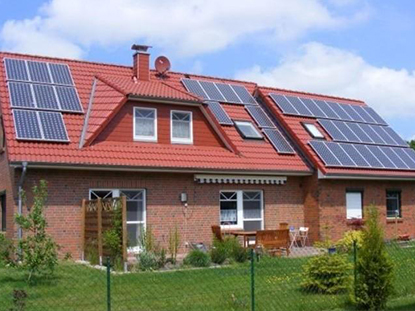
At present, the materials of photovoltaic support mainly include aluminum alloy (A16005-T5 surface anodic oxidation), stainless steel (304), galvanized steel parts (Q235 hot-dip galvanized), among which stainless steel has the highest cost, good weather resistance, and recyclable value high. Aluminum alloy brackets are generally used in the roof solar energy application of civil buildings. Aluminum alloy has the characteristics of corrosion resistance, light weight, beautiful and durable, but its bearing capacity is low and cannot be applied to large-scale solar power station projects. In addition, the price of aluminum alloy is slightly higher than that after hot-dip galvanizing. The galvanized steel bracket has stable performance, mature manufacturing technology, high bearing capacity and easy installation. It is widely used in civil and industrial solar photovoltaic and solar power stations. Among them, the section steel is produced in the neighborhood committee factory, with uniform specifications, stable performance, excellent anti-corrosion performance and beautiful appearance. It is worth mentioning that the combined steel bracket system, for on-site installation, only needs to use specially designed connectors to assemble the channel steel. The construction speed is fast and no welding is required, thus ensuring the integrity of the anti-corrosion layer. The disadvantage of this kind of product is that the connecting parts are complicated in technology, have a wide variety, and have high requirements for manufacturing and design, so they are expensive. Another disadvantage of galvanized steel is that the final recycling value of the material is not as high as the first two.
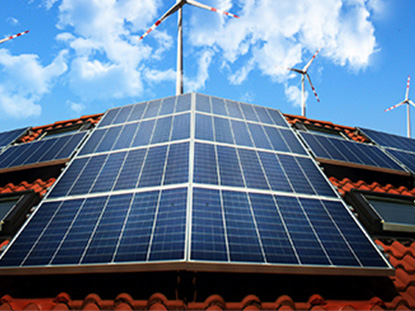
What are the requirements for the surrounding environment for rooftop photovoltaic power generation system installation? There are large dust pollution sources around the photovoltaic power generation system, heavy sand, heavy smoke, etc., which affect the use of sunlight, which will lead to a decline in power generation. Does the photovoltaic power generation system need to be disconnected during thunderstorms? Distributed photovoltaic power generation systems are equipped with lightning protection devices, so there is no need to disconnect them. It is recommended that for safety insurance, you can choose to disconnect the circuit breaker switch of the combiner box and cut off the circuit connection with the photovoltaic module to avoid the harm caused by direct lightning that cannot be removed by the lightning protection module. The operation and maintenance personnel should check the performance of the lightning protection module in time to avoid the harm caused by the failure of the lightning protection module. How to prevent lightning from photovoltaic power generation combined with buildings? Lightning is mainly divided into two hazards: direct lightning strikes and indirect lightning strikes. Protection of direct lightning strikes: Set up metal lightning protection wires to the ground on tall buildings to release the huge charges of thunderstorm clouds. Inductive lightning protection: Add lightning protection devices to the photovoltaic system, that is, add lightning protection modules to electrical equipment such as combiner boxes and inverters to protect against indirect lightning strikes. When it is cold in winter, will there be insufficient power? The power generation of photovoltaic systems is indeed affected by temperature, but the impact is very small. The factors that directly affect the power generation are the radiation intensity and sunlight, and the operating temperature of the solar cell components. In winter, the temperature is relatively low and the duration of sunshine will be short, so generally the power generation will be less than in summer, which is also normal. Will the photovoltaic power generation system still work in continuous rainy or hazy days after installation? Photovoltaic cell modules can also generate electricity under a certain amount of low light. Haze does have an impact on photovoltaic power generation, but the impact on power generation efficiency does not exceed 5% (except for heavy haze). Under normal circumstances, the power generation in rainy days is only about 10%-20% of normal. Due to continuous rainy or haze weather, the solar radiation illuminance is low, if the working voltage of the photovoltaic system does not reach the starting voltage of the inverter, the system will not work, and the grid-connected power generation system and the distribution network are operated in parallel , When the photovoltaic system cannot meet the load demand and does not work, the electricity from the grid will a...
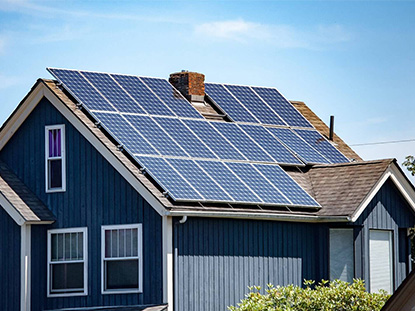
How to extend the service life of photovoltaic brackets limitedly? Ground photovoltaic support system, common ground photovoltaic system generally adopts concrete strip (block) foundation form. The challenges faced by the design of solar photovoltaic stents, the most important feature of any type of solar photovoltaic stent design scheme is the weather resistance. The structure must be reliable and able to withstand atmospheric erosion, wind loads and other external effects. Safe and reliable installation, maximum use effect with minimum installation cost, almost maintenance-free, reliable maintenance, these are all important factors that need to be considered when choosing a plan. Highly wear-resistant materials are used in the solution to resist wind and snow loads and other corrosive effects. Comprehensive use of aluminum alloy anodizing, ultra-thick hot-dip galvanizing, stainless steel, anti-UV aging and other technologies to ensure the service life of solar stents and solar tracking. At present, the commonly used photovoltaic support foundation forms are cement-based and spiral pile-type. Cement-based photovoltaic brackets usually use independent foundations or strip foundations, and the production methods are prefabricated or cast-in-place. Its outstanding advantage is that the amount of steel used is low, and it is basically not restricted by geological conditions. The photovoltaic bracket has excellent anti-corrosion performance and safety. The hidden danger is small. Which aspects of the photovoltaic bracket are the focus of attention? The manufacturers of photovoltaic brackets face the needs of customers. When customers understand their products, it is actually a behavior to win the trust of customers by publishing the detailed parameters of the products. Normally, it is not necessary to fully focus on the focus of photovoltaic selection for non-professional users. On the parameters. It's not that the parameters are not important, but if you can't understand many parameters, you should focus on introducing the details from the side, and then compare the parameters after a preliminary understanding. Different materials and treatments with the same parameters will vary a lot. This is one of the reasons why the brand's products are still high in price although their parameters are not high in comparison. It should be judged and selected from the side. For example, from the following aspects of erecting structure, tracking moving parts, component materials, component processing technology, quality assurance time, and effective use time. For photovoltaic brackets, the product descriptions between networks always include parameters, including installed capacity, control mode, tracking (accuracy, elevation angle, azimuth angle), safe operation capability, working environment, area, overall weight, etc. What issues should be paid attention to when selecting solar photovoltaic brackets? The selection of solar mounting materials and installation ...
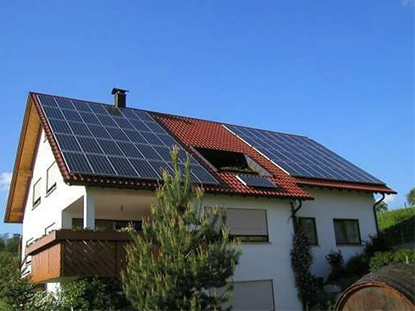
21. Does the photovoltaic power generation system need to be operated every day? Answer: No need at all, because the system monitoring is fully automatic, it will start and close by itself, without manual control. 22. Are there restrictions on the installation location of photovoltaic modules? Answer: The extreme working environment temperature range of photovoltaic modules is -40℃ to 85℃. It is recommended to install in an environment with a temperature range of -20℃ to 50℃. This temperature is the monthly average minimum temperature and maximum temperature of the installation site, and the altitude of the installation team. There is no requirement, but the altitude limit of other supporting electrical equipment needs to be considered. 23. What electrical safety requirements should be paid attention to during the installation process? Will leakage of electricity cause danger to the human body? Answer: As long as there is sunlight, the photovoltaic modules will have electricity, so the power cannot be cut off when there is sunlight, and due to the accumulation of series connection voltage, the corresponding ground voltage will also be very high. Therefore, the installation process should strictly follow the installation instructions provided by the system supplier and be completed by professional installers. The wiring part of the equipment is installed with professional connectors, and the protection level is IP65. The electrical equipment is also protected by air switches to prevent leakage current from harming life. At the same time, pay attention to protection against rain and snow. Specific requirements are as follows: a. When installing components, please use insulated tools and do not wear metal ornaments. b. Do not disconnect the electrical connection when there is a load. c. The plug must be kept dry and clean. Do not insert other metal objects into the plug or make electrical connections in any other way. d. Do not touch or operate the photovoltaic module with broken glass, peeling off the frame and damaged back panel, unless the module is disconnected from the electrical connection and you are wearing personal protective equipment. e. If the component is wet, do not touch the component, except when cleaning the component, but you need to operate in accordance with the requirements of the component cleaning manual. When you are not wearing personal protective equipment or rubber gloves, you must not touch the wet connector. 24. How are the components guaranteed? Answer: Conventional crystalline silicon modules provide a 10-year limited product quality guarantee, that is, they can be repaired or replaced within ten years. In addition, they also provide a 25-year peak power limited warranty, that is, to ensure that the peak power attenuation of the module is within a certain range. 25. What are the characteristics of component failure? Answer: The common aging phenomena of crystalline silicon components include cell chipping, hot spots, E...
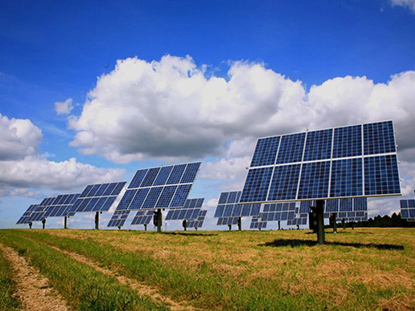
1. In order to prevent the photovoltaic modules from being hit by heavy objects, can the photovoltaic array be equipped with a wire protection net? Answer: It is not recommended to install a wire protection net. Because the installation of wire protection nets on the photovoltaic array may cause partial shadows on the components, forming a hot spot effect, and affecting the power generation efficiency of the entire photovoltaic power station. In addition, since qualified photovoltaic modules have passed the ice hockey impact test, there is no need to install protective nets under normal circumstances. 2. How to choose qualified system accessory products and how long is the warranty period? Answer: It is recommended to choose the system accessories products that have passed the certification of the national approval certification body. The key components and raw materials models, specifications and manufacturers should be consistent with the certified products. In addition, the specifications, models and technical parameters of all system accessories should match the design of the entire system. Generally speaking, components require a warranty of at least 5 years, and inverters require a warranty of at least 2 years. 3. Is the power generation monitoring data of the distributed photovoltaic grid-connected system the same as the metering data? How big is the error? Answer: The power generation monitoring data of the distributed photovoltaic grid-connected system and the metering data are not necessarily the same. If the same electricity metering equipment is used at the same grid connection point and the accuracy is exactly the same, the data obtained should be the same. However, the monitoring equipment used by the photovoltaic grid-connected system is often the equipment used by the system construction unit itself, and the meter measurement equipment is often the equipment installed by the power department. Therefore, the data obtained may have some gaps depending on the equipment. The amount of error depends on the specific situation. The settlement of electricity bills and subsidies is based on the metering equipment installed by the power sector. 4. Can the power generation of the system be monitored online? Answer: Each power grid company cooperates with the energy authority at this level to carry out the measurement, information monitoring and statistics of distributed photovoltaic power generation within the coverage of the power grid at this level. If the photovoltaic system is equipped with a corresponding monitoring system, it can realize online monitoring of power generation. In addition, the monitoring system can also realize online monitoring of key equipment parameters, power quality, environmental parameters, etc. 5. How to judge whether the distributed photovoltaic grid-connected system is stable, whether the power quality meets the requirements, and whether the system will cause damage to the household appliances in the state of ...

1. Which equipment is suitable for? Where? 1) The off-grid PV systems is widely used in outdoor outings, nomadic families, farmers, ships, islands, remote mountainous areas, ground satellite receiving stations, weather stations, forest fire observation stations, remote outposts and other places. 2) 500W off-grid system rated power (load capacity) 500W, suitable for TVs, computers, lighting, rice cookers, monitoring equipment, fans, small hand drills, small water pumps, small washing machines, etc. whose power is less than 400W; high-power washing machines and air conditioners cannot be used , High-power refrigerators, high-power electric drills, water pumps, induction cookers, microwave ovens and other equipment, otherwise the system may be damaged. 3) 1000W/1500W off grid solar power system rated power (carrying capacity) 1000W/1500W, suitable for TVs, computers, lighting, rice cookers, monitoring equipment, washing machines, refrigerators, fans, low-power induction cookers with power less than 800W/1200W; air-conditioning, Large refrigerators, high-power electric drills, water pumps, microwave ovens and other equipment, otherwise the system may be damaged. 2. What are the characteristics of the off-grid PV system? This series of solar photovoltaic power generation system adopts a power frequency inverter with a toroidal transformer structure. The system has low no-load loss, strong load capacity, high operating efficiency, and is more stable than high-frequency inverters. The system has a built-in AC charger, which is convenient for charging with AC power in rainy days. 3. How much electricity can the system save? How long can it be used? For example, a 500W off-grid system has a built-in battery of 12V50AH, and the storage capacity is about 0.6 kWh. If the load power connected to the system is a 50W lamp, the approximate time it can be used when fully charged is 0.6KWH*0.7/50W=8.4 hours (0.7 is the battery Depth of discharge coefficient); other types of battery capacity are shown in the table above, and so on. The off-grid PV system has an external battery port, which can be connected to the battery according to the actual needs of the user. At the same time, this port can also be used to charge the battery with an external charger. 4. How much electricity can the system generate? For example, a 500W off-grid PV system is conventionally equipped with two 50W solar panels, and places with good solar energy resources generate approximately 0.4-0.6 degrees per day. The system's maximum support for external solar panels is shown in the table above, and customers can add solar panels as needed. 5. How many voltage outputs are there? The system has 12V output ports, which can be connected to 12V LEDs for lighting; USB 5V output ports are used for mobile phone charging; 2 220V internationally accepted AC output ports are connected to AC loads. 6. What waveform is output? Is the voltage stable? How is the efficiency? The output of the system is pure s...
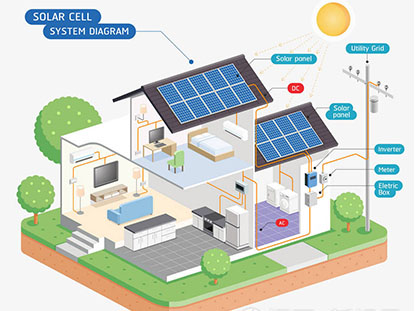
1. In order to prevent the photovoltaic modules from being hit by heavy objects, can the photovoltaic array be equipped with a wire protection net? Answer: It is not recommended to install a wire protection net. Because the installation of wire protection nets on the photovoltaic array may cause partial shadows on the components, forming a hot spot effect, and affecting the power generation efficiency of the entire photovoltaic power station. In addition, since qualified photovoltaic modules have passed the ice hockey impact test, it is generally not necessary to install a protective net. 2. How to choose qualified system accessory products and how long is the warranty period? Answer: It is recommended to choose the system accessories products that have passed the certification of the national approval certification body. The key components and raw materials models, specifications and manufacturers should be consistent with the certified products. In addition, the specifications, models and technical parameters of all system accessories should match the design of the entire system. Generally speaking, components require a warranty of at least 5 years, and inverters require a warranty of at least 2 years. 3. If the grid is out of power or other failures occur, can the household distributed photovoltaic grid-connected system still operate normally? Answer: After the power grid is out of power, the household distributed photovoltaic power generation system generally quits operation and cannot generate power normally. However, in some extreme cases, islanding may occur, that is, after the power grid is out of power, the household distributed photovoltaic power generation system still continues to operate with part of the load, affecting the personal safety of maintenance personnel, and may damage household appliances and grid facilities. Sex. Therefore, the distributed photovoltaic system must have anti-islanding function. 4. Does poor grid power quality affect the photovoltaic power generation system? Answer: Grid quality issues such as excessive grid voltage and abnormal frequency will cause the inverter to shut down, and the system will automatically recover after the grid recovers. 5. How stable is the photovoltaic power generation system? Will it fail in a few years? Answer: It is recommended to choose components of reliable brands. They have passed the authoritative monitoring certification around the world, passed the salt spray and ammonia corrosion resistance test, and have excellent low-light environment power generation performance. After 20 years of use, the power generation performance of the module can still maintain more than 80%. 6. What are the requirements for the surrounding environment for the installation of rooftop photovoltaic power generation systems? Answer: There are large dust pollution sources around the photovoltaic power generation system, heavy sand, heavy smoke, etc., which affect the use of light, which will lead to a...
1
pagesIf you are interested in our products and want to know more details,please leave a message here,we will reply you as soon as we can.
Copyright © 2026 CXMSOLAR.COM. All Rights Reserved.

IPv6 network supported
Friendly Links:
China Solar Power System Energy Storage System Solutions Manufacturer External Sound Card China Vehicle Security Cameras Custom umbrella with photos Amoy Brand Mini Solar System Hydrogen Production Equipment Solar Charge Controller China Lithium Batteries Lead Storage Battery Solar Mounting Structure solarsunever Glory Zenith pandasolarpv fescharging